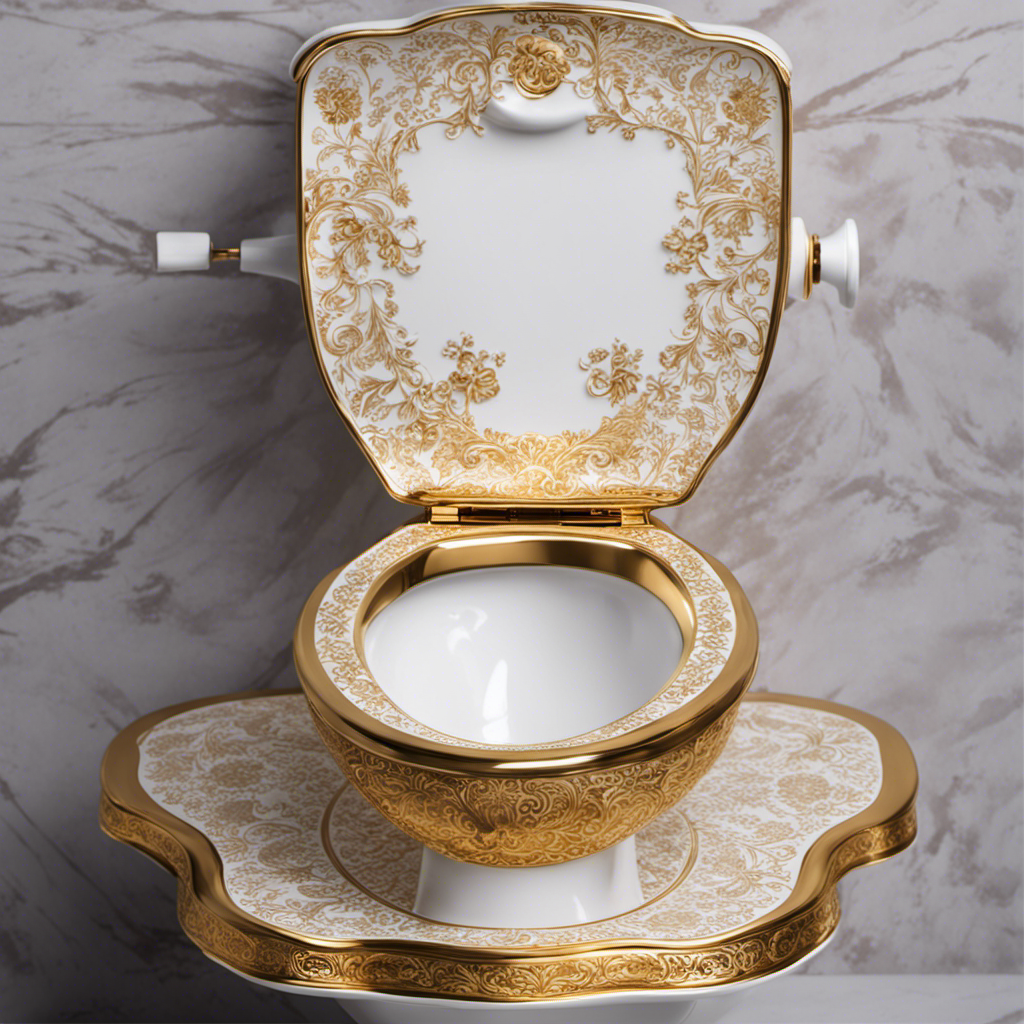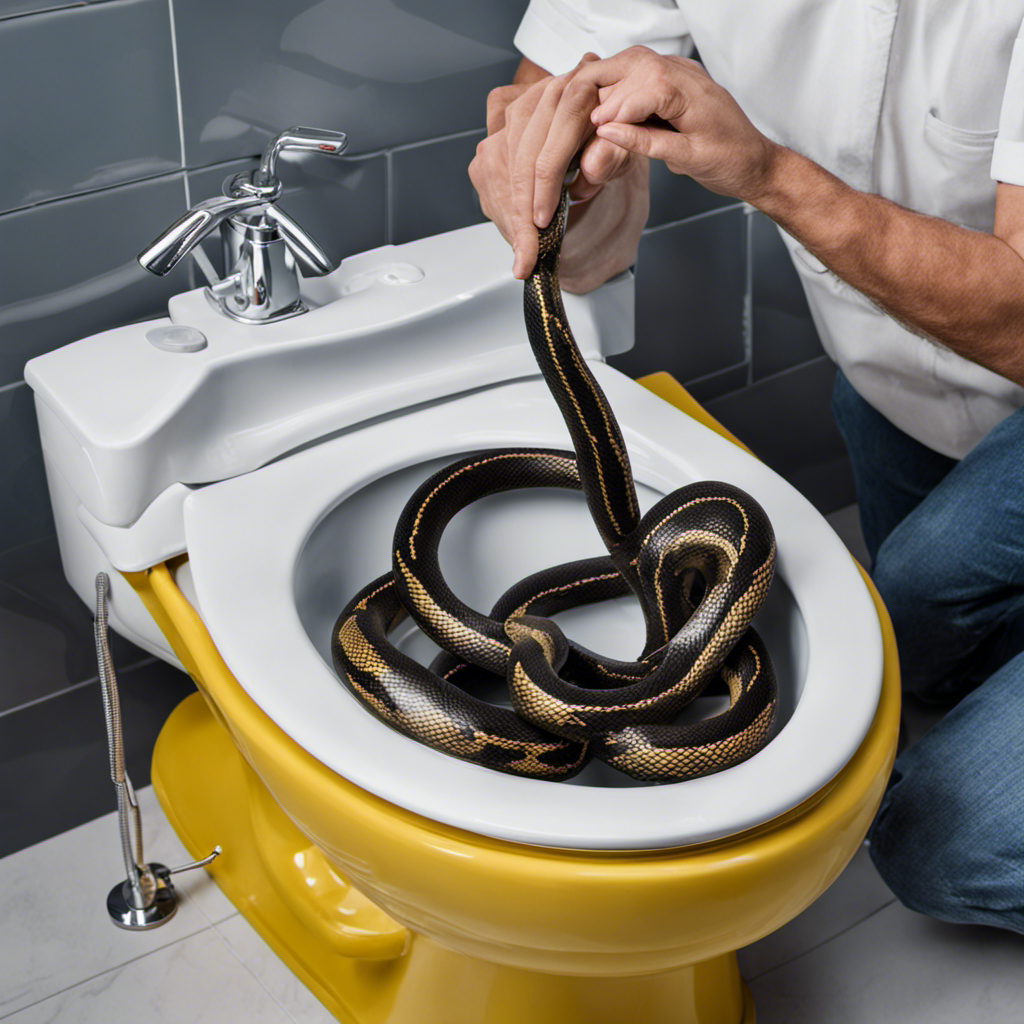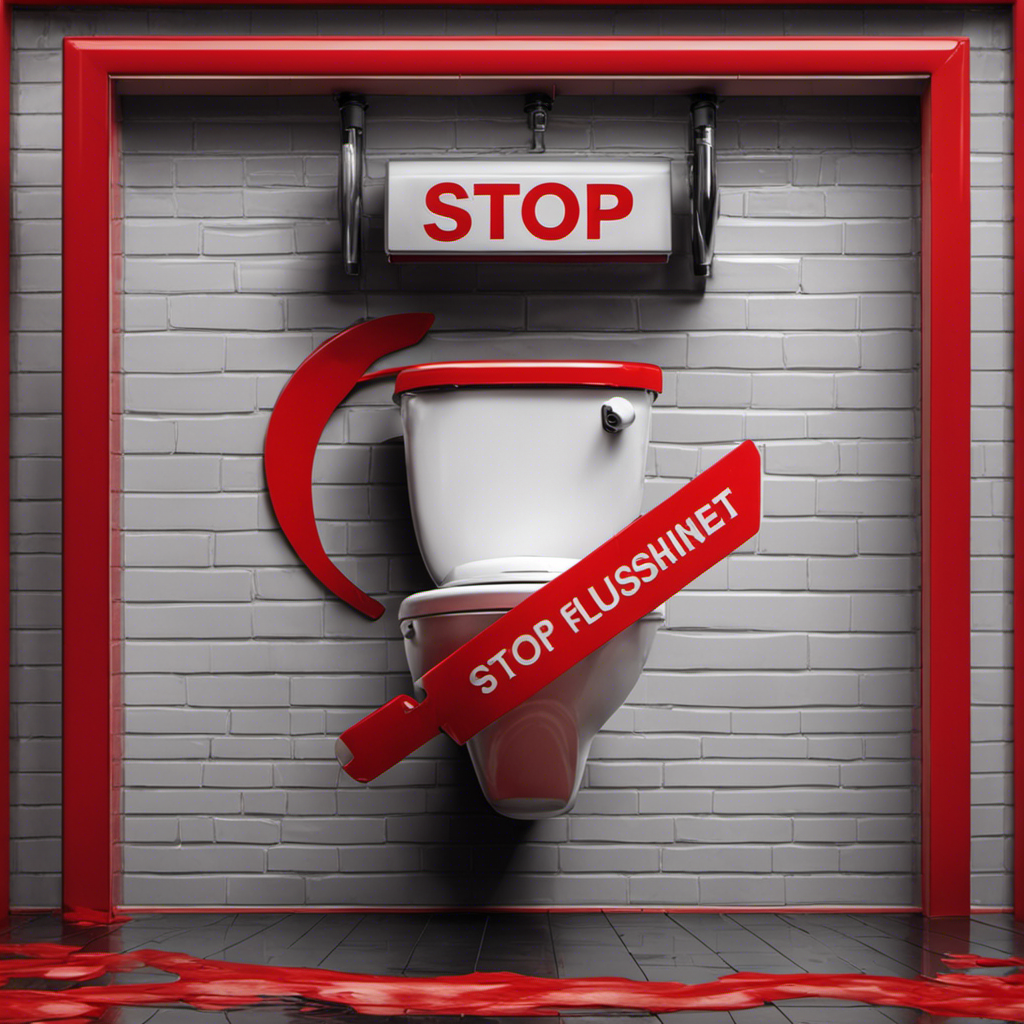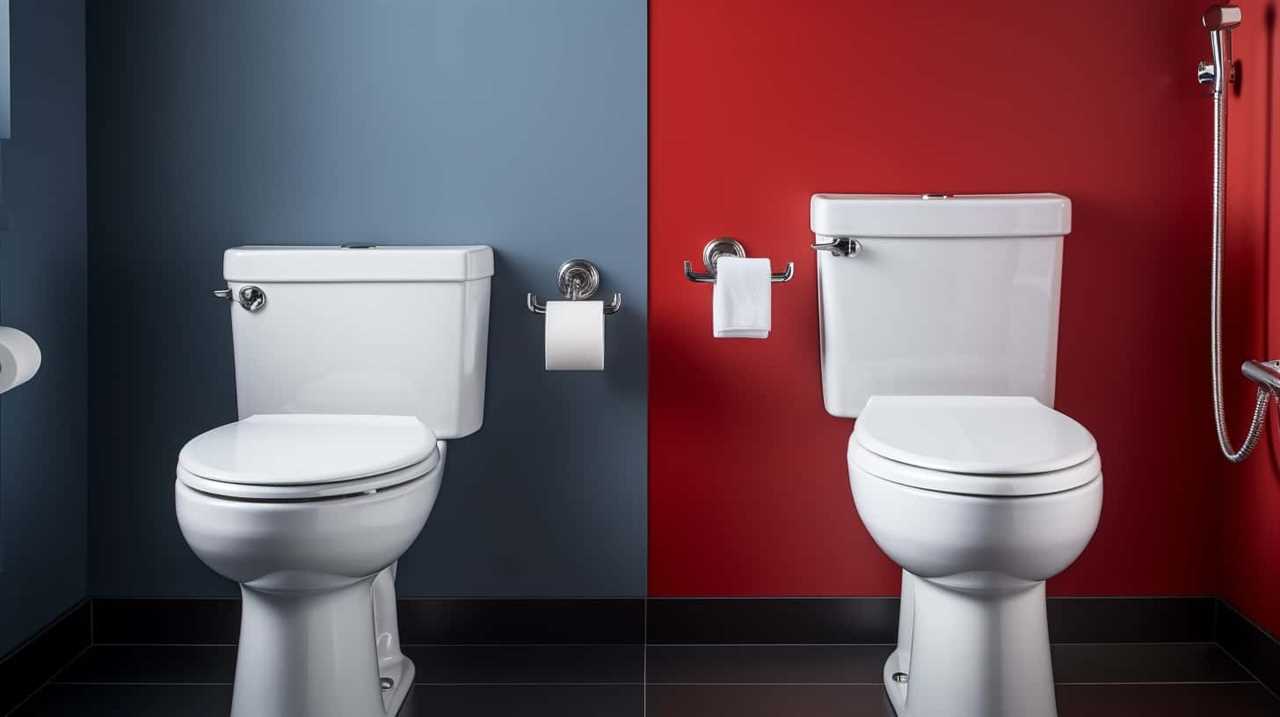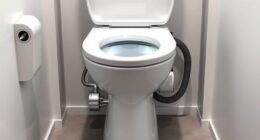Have you ever wondered what causes that unsightly brown ring in your toilet bowl?
Well, I’m here to uncover the mystery behind this common bathroom nuisance.
Mineral deposits, hard water stains, rust and corrosion, bacterial growth, and an aging plumbing system are all culprits that contribute to the formation of this unpleasant phenomenon.
In this article, we’ll delve into the intricate details of each of these factors and explore how they can be addressed to keep your toilet bowl sparkling clean.
Get ready to uncover the secrets behind the brown ring!
Key Takeaways
- Mineral deposits from dissolved calcium and magnesium can build up over time and cause a stubborn brown stain in the toilet bowl.
- Hard water stains can be difficult to remove, but using a toilet bowl cleaner designed for mineral stains and a stiff-bristled brush can help prevent buildup.
- Rust and corrosion in older plumbing systems can weaken pipes and fixtures, leading to leaks and breaks.
- Bacterial growth in plumbing systems can cause odors and health hazards, so regular cleaning and addressing leaks are important to prevent buildup.
Mineral Deposits
Mineral deposits can lead to the formation of a brown ring in the toilet bowl. These deposits occur when minerals, such as calcium and magnesium, dissolve in the water and then settle on the surface of the bowl.
Over time, these minerals can build up and form a stubborn brown stain. To prevent mineral buildup and keep your toilet bowl clean, it is important to regularly clean and maintain it. One effective method is to use a toilet bowl cleaner specifically designed to remove mineral stains. These cleaners contain chemicals that break down and dissolve the minerals, making it easier to remove the brown ring. Additionally, using a toilet brush with stiff bristles can help scrub away the deposits.
By taking these preventive measures, you can ensure that your toilet bowl remains free from mineral stains and buildup.
Transitioning to the next section, another common cause of stains in the toilet bowl is hard water.
Hard Water Stains
Hard water stains can be quite stubborn and difficult to remove from the toilet bowl. As an expert in toilet cleaning, I am well aware of the challenges that hard water stains can present. However, with the right removal methods, these stains can be effectively eliminated.
Here are three effective techniques to get rid of hard water stains in your toilet bowl:
-
Vinegar and Baking Soda: Mix equal parts of vinegar and baking soda to create a powerful cleaning solution. Apply the mixture directly to the stained areas and let it sit for about 30 minutes. Scrub the stains with a toilet brush and flush the toilet.
-
Lemon Juice: Squeeze fresh lemon juice onto the stains and let it sit for a few minutes. The citric acid in the lemon juice helps dissolve the mineral deposits. Scrub the stains with a toilet brush and flush.
-
Commercial Cleaners: There are numerous commercial cleaners available specifically designed to remove hard water stains. Follow the instructions on the product carefully and use the cleaner as directed.
Rust and Corrosion
Rust and corrosion can be a common problem in older plumbing systems, causing leaks and other issues. As a plumber with years of experience, I have seen firsthand how chemical reactions and environmental factors contribute to the deterioration of pipes and fixtures.
When metal pipes come into contact with water, a chemical reaction occurs, resulting in the formation of rust. This process, known as oxidation, weakens the structural integrity of the pipes, making them more susceptible to leaks and breaks. Environmental factors such as high humidity, exposure to saltwater, and acidic substances can accelerate the corrosion process. Additionally, certain minerals and impurities in the water can also contribute to rust formation.
To prevent and mitigate these issues, regular maintenance and inspections are crucial to identify and address any signs of rust or corrosion before they lead to costly repairs.
Bacterial Growth
Bacterial growth in plumbing systems can lead to unpleasant odors and potential health hazards if not properly addressed and treated. Understanding the causes of bacterial growth is crucial in preventing these issues. Here are three key factors to consider:
-
Moisture: Bacteria thrive in moist environments, making the interior of plumbing systems an ideal breeding ground. Leaky pipes or excessive condensation can create the perfect conditions for bacterial growth.
-
Organic matter: Bacteria feed on organic matter, such as food waste or soap scum. When these substances accumulate in the plumbing system, they provide a food source for bacteria, allowing them to multiply rapidly.
-
Lack of proper cleaning: Insufficient cleaning of toilet bowls can lead to bacterial growth and subsequent discoloration. Regular cleaning with effective cleaning solutions is essential to prevent bacterial buildup and maintain a hygienic environment.
To prevent bacterial growth and maintain a clean plumbing system, it is crucial to address any leaks, eliminate organic matter, and regularly clean using appropriate cleaning solutions.
Aging Plumbing System
Over time, an aging plumbing system may develop cracks and leaks, causing water damage and potentially leading to costly repairs. Proper plumbing maintenance is crucial to prevent these issues and ensure the longevity of your system.
One common problem that can occur in an aging plumbing system is toilet bowl discoloration. This can be caused by a variety of factors, including mineral deposits, rust, or even bacteria growth. If you notice a brown ring in your toilet bowl, it is important to address it promptly.
Regular cleaning and maintenance can help prevent discoloration and keep your toilet bowl looking clean and fresh.
Additionally, it is important to regularly inspect your plumbing system for any signs of damage or leaks and address them immediately to avoid further complications.
Conclusion
In conclusion, the presence of a brown ring in your toilet bowl can be attributed to various factors.
Mineral deposits, commonly found in hard water, can accumulate over time and cause discoloration. Additionally, hard water stains and rust can contribute to the unsightly ring.
Bacterial growth can also play a role, especially in older plumbing systems.
Understanding these underlying causes can help you tackle the issue effectively and restore the pristine condition of your toilet bowl.

